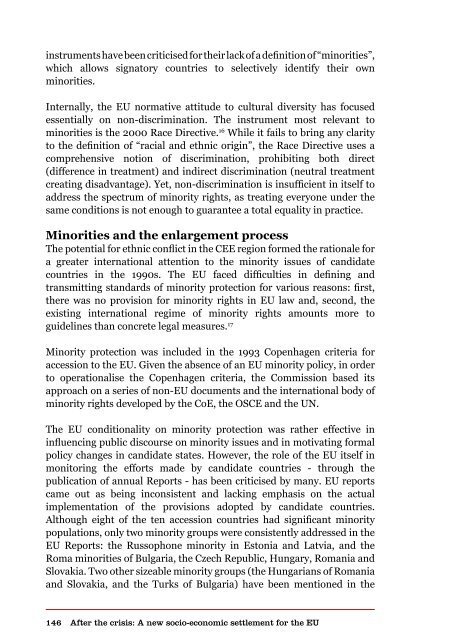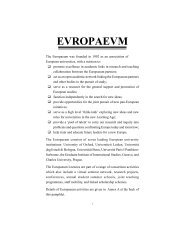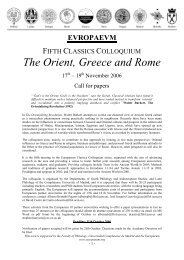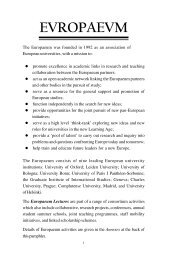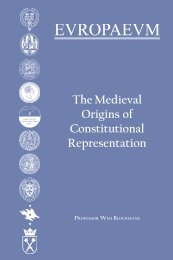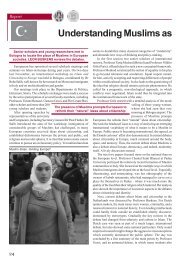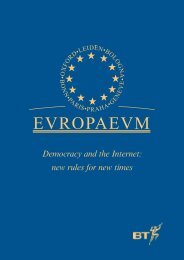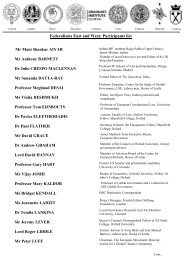Authors Iain Begg | Gabriel Glöckler | Anke Hassel ... - The Europaeum
Authors Iain Begg | Gabriel Glöckler | Anke Hassel ... - The Europaeum
Authors Iain Begg | Gabriel Glöckler | Anke Hassel ... - The Europaeum
Create successful ePaper yourself
Turn your PDF publications into a flip-book with our unique Google optimized e-Paper software.
instruments have been criticised for their lack of a definition of “minorities”,<br />
which allows signatory countries to selectively identify their own<br />
minorities.<br />
Internally, the EU normative attitude to cultural diversity has focused<br />
essentially on non-discrimination. <strong>The</strong> instrument most relevant to<br />
minorities is the 2000 Race Directive. 16 While it fails to bring any clarity<br />
to the definition of “racial and ethnic origin”, the Race Directive uses a<br />
comprehensive notion of discrimination, prohibiting both direct<br />
(difference in treatment) and indirect discrimination (neutral treatment<br />
creating disadvantage). Yet, non-discrimination is insufficient in itself to<br />
address the spectrum of minority rights, as treating everyone under the<br />
same conditions is not enough to guarantee a total equality in practice.<br />
Minorities and the enlargement process<br />
<strong>The</strong> potential for ethnic conflict in the CEE region formed the rationale for<br />
a greater international attention to the minority issues of candidate<br />
countries in the 1990s. <strong>The</strong> EU faced difficulties in defining and<br />
transmitting standards of minority protection for various reasons: first,<br />
there was no provision for minority rights in EU law and, second, the<br />
existing international regime of minority rights amounts more to<br />
guidelines than concrete legal measures. 17<br />
Minority protection was included in the 1993 Copenhagen criteria for<br />
accession to the EU. Given the absence of an EU minority policy, in order<br />
to operationalise the Copenhagen criteria, the Commission based its<br />
approach on a series of non-EU documents and the international body of<br />
minority rights developed by the CoE, the OSCE and the UN.<br />
<strong>The</strong> EU conditionality on minority protection was rather effective in<br />
influencing public discourse on minority issues and in motivating formal<br />
policy changes in candidate states. However, the role of the EU itself in<br />
monitoring the efforts made by candidate countries - through the<br />
publication of annual Reports - has been criticised by many. EU reports<br />
came out as being inconsistent and lacking emphasis on the actual<br />
implementation of the provisions adopted by candidate countries.<br />
Although eight of the ten accession countries had significant minority<br />
populations, only two minority groups were consistently addressed in the<br />
EU Reports: the Russophone minority in Estonia and Latvia, and the<br />
Roma minorities of Bulgaria, the Czech Republic, Hungary, Romania and<br />
Slovakia. Two other sizeable minority groups (the Hungarians of Romania<br />
and Slovakia, and the Turks of Bulgaria) have been mentioned in the<br />
146<br />
After the crisis: A new socio-economic settlement for the EU


